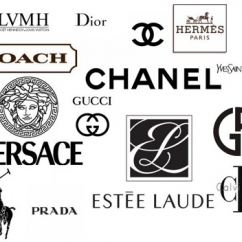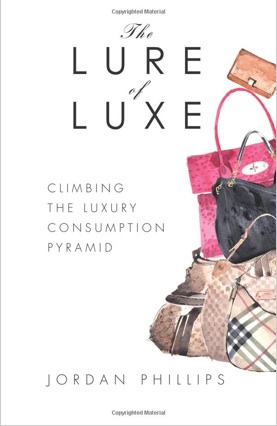Articles and News
Understanding Millennials: How To Sell Lasting Luxury In A Disposable Culture | June 26, 2013 (0 comments)

Merrick, NY—“Use it up, wear it out, make it do, or do without!”
Thrifty Americans struggling to stretch pennies in the Great Depression and coping with the shortages of World War II lived by this mantra, but to a Millennial consumer it’s a quaint old saying they can't begin to relate to. Imagine a 20-something still carrying a flip phone? LOL.
After the war, anxious to put 15 years of deprivation behind them, Americans were hungry to consume. Suburbs, highways, and shopping centers were built. The GI Bill sent returning soldiers to college in record numbers, dramatically shifting the proportion of blue- and white-collar workers. Wartime technology sparked the invention of new peacetime gadgets, not the least of which was television—and television advertising. The material culture was born.
As technology advanced and developing nations matured, consumer goods became cheaper to produce. The material culture, with its emphasis on convenience and leisure time, gradually became a disposable culture. Boomers might still be willing use their old cell phone until it breaks, but even an iPhone 3 is ancient to a Millennial.
Millennials also grew up with a much greater awareness of luxury brands than their parents, and with a higher degree of ownership. In the 1970s, for example, it was rare for a high school girl to carry a Louis Vuitton handbag. Now, thanks to both advertising and a proliferation of “entry luxury,” it’s not at all uncommon, even in middle-class communities. But does that girl really buy the bag for the rich history the brand stands for, or is she just reacting to advertising and peer pressure? And does it really matter, as long as she buys?
Jordan Phillips, founder of lure of luxe LLC, and author of The Lure of Luxe: Climbing The Luxury Fashion Pyramid and a Millennial herself, says yes, it does matter, and it’s going to matter even more in the future.

But luxury jewelers often find that hard to believe. Worried about selling to a generation weaned on costume jewelry and fast fashion, how does a luxury jeweler sell the concept of lasting quality and value to a customer who wants only the latest of everything?
Phillips is a former public relations and marketing executive for Fleishman-Hillard and holds a master's degree in fashion marketing and management from the Ecole Supérieure des Arts et Techniques de la Mode (ESMOD) in Paris, France. In an exclusive interview with The Centurion, she explains how to sell forever to a customer who’s all about the new and now:
The Centurion: In your book, you emphasize the qualities of true luxury: quality, craftsmanship, rarity, and something meant to last. But Millennials grew up with disposable fashion and electronics. They also grew up with good design at accessible prices, raising the bar even higher for luxury brands. How do luxury retailers reconcile these two disparate views of consumption, and retrain the customer used to buying for now, to buy something that lasts forever?
Jordan Phillips: The "throwaway culture" has been widespread now for decades, and not just among the younger generations. The widespread availability of cheap products (like fast fashion) has changed people's expectations about product quality and life cycles. Because price has become the main issue, consumers started demanding cheaper prices, which they got, and it's become a downward spiral.
The good news is there is an increasing interest in sustainability, and recent tragedies in Bangladesh have shown the true cost of fast fashion. I advise fine jewelers to avoid the trap of competing on price alone, and instead focus on marketing their traceable, sustainable, high-quality products. A jeweler who sources ethically and has beautiful products with compelling stories will be well positioned for future growth.
Centurion: Your book advocates reaching Millennials through loyalty and experiences. But even Staples has a loyalty program, so what will set a luxury retailer apart?
Phillips: It is a must for any retailer in any market to reward loyalty, period. Moda Operandi, for example, offers repeat clients access to fashion shows at New York Fashion Week, showroom previews, and other special events. Companies must understand their clients, and offer loyalty rewards that are truly appealing.
Centurion: How can a luxury retailer keep raising the experience bar for a generation that practically invented extreme sports and expects a thrill a minute?
Phillips: Every product today must be packaged with a story or an experience, especially in the realm of luxury. This can be as simple as telling the story of where the jewels were mined, who made the jewelry and how, what each gem stands for, and interesting facts from the past. Without a compelling story of why a gem is so special, there is really nothing to set it apart from a costume-jewelry equivalent in the minds of consumers.
Centurion: Fine jewelers already worry that Millennials care more about the look of jewelry than its intrinsic value. It’s all about the fashion. So how does a jeweler convince a customer to spend $1800 on an 18k hammered gold and gemstone bangle vs. $18, or even $180, on a plated one with fake stones that they will wear one season before they’re onto the next trend? How does a jeweler demonstrate the real one is worth the investment?
Phillips: The design and style of the jewelry is absolutely the most important! If a style is out of fashion, it will not sell no matter what it is made of. The key is to be on top of fashion at all times, and create jewelry that couldn't be easily replicated. The jewelry section at Barneys provides countless examples of this.
Centurion: How does that translate to a merchandising strategy for a jeweler whose inventory is costly to begin with? It’s one thing to mark down a $700 blouse at the end of a season, but quite another to mark down a $7,000 bracelet. Jewelers can’t afford to be left with trendy merchandise they can’t sell and can’t return.
Phillips: I would never advocate for "trendy;" that is very different from being in style. The style cycles for jewelry do not change very frequently, so it is not difficult to stay on top of it. But fine jewelry is an accessory, and is very much a fashion item and a jeweler has to be on the pulse of what's in fashion.
Centurion: Millennials are famous for not wanting to pay full price for anything except maybe Apple products. How does a luxury retailer sell through to a customer whose immediate response is to see if they can buy it cheaper online?
Phillips: Paying full price for something when the same thing is cheaper online would be silly! Millenials grew up with an abundance of shopping choices and are looking for a fair value. This does not mean we will not pay full price, but we will certainly not overpay for something. The marketplace—online and off—determines value.
Centurion: Older Millennials who graduated college and got into the workforce prior to the recession are hitting their peak earning years, but the unemployment rate for recent college grads is double the national average of all college grads. How can a luxury retailer start building a relationship with a consumer who can’t afford to move out of their parents’ house?
Phillips: Luxury retailers must have a compelling story, and tell that story consistently across all channels, including social media. Retailers must reach current and potential clients every day, building the dream.
Centurion: From your perspective, are there any luxury brands you think are in danger of becoming irrelevant to Millennials, and, conversely, any luxury brands you think will hit big with this audience?
Phillips: Any luxury brand that does not stay on top of social media, online/mobile commerce, and general technology trends will become irrelevant in the near future. Only those with compelling stories, full traceability, and excellent technological skills will remain.
For further reading: Future of fashion brands depends on millennial brand affinity, Luxury Daily.com
Top image: afashionmind.com







